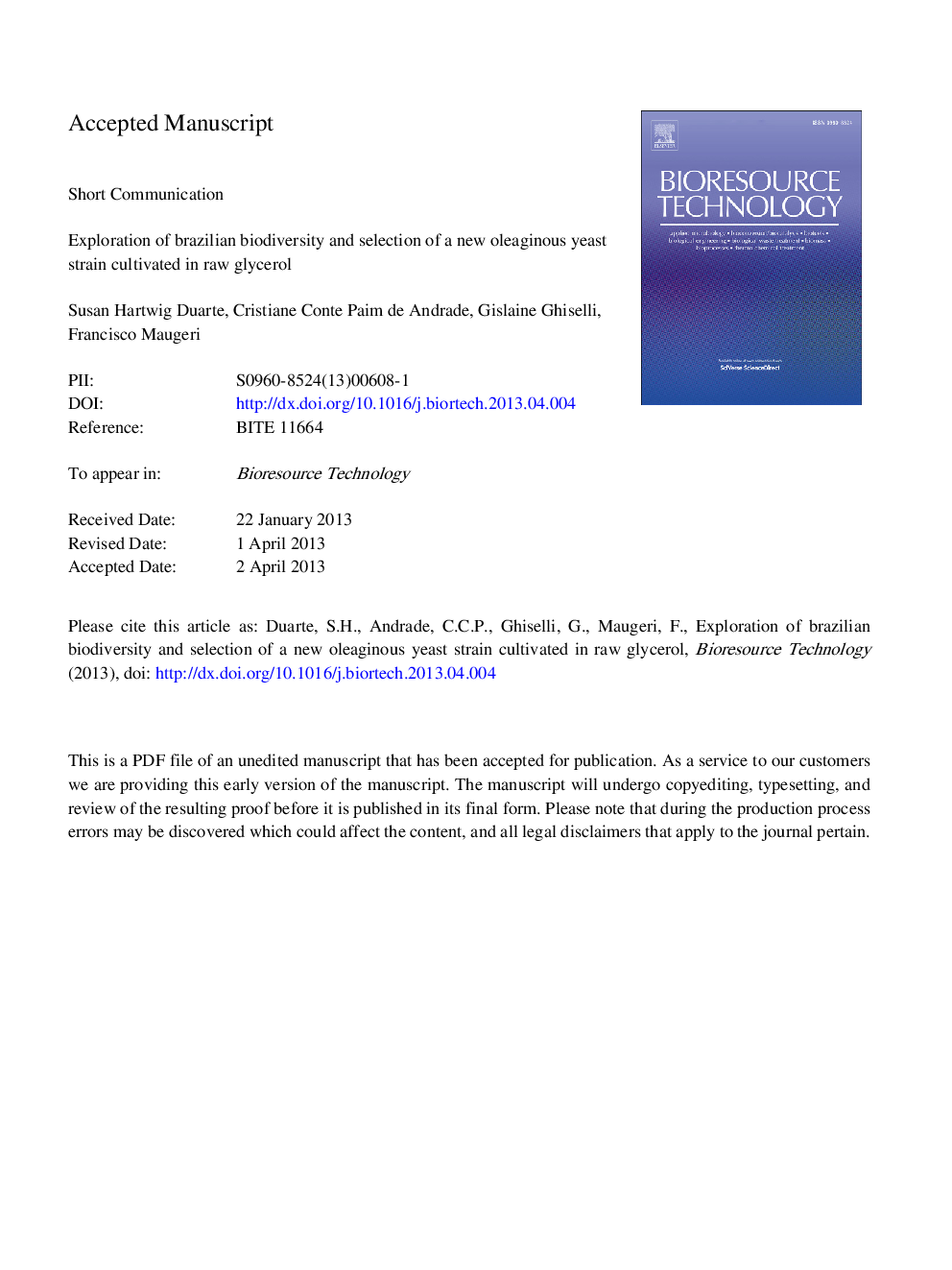| Article ID | Journal | Published Year | Pages | File Type |
|---|---|---|---|---|
| 7082741 | Bioresource Technology | 2013 | 17 Pages |
Abstract
The objective of this study was to use glycerol generated from the synthesis of biodiesel to study the oleaginous potential of wild yeasts. An initial selection was performed via a rapid and qualitative technique by staining with Sudan Black B. Initially 129 yeasts were present, from which 5 were selected and cultivated in liquid medium containing pure or raw glycerol. The yeast LEB-M3, isolated from the Pantanal, presented lipid content of 20.46% and 56.58% for cultivation in pure and raw glycerol, respectively. This strain was genotypically identified as Candida sp. The fatty acid profile showed predominance of oleic acid (C18:1), 57.35% for cultivation in pure glycerol, and in raw glycerol linoleic acid (C18:2) was predominant (46.0%). It was possible to select a yeast with high lipid concentrations 9.14Â g/L and fatty acid profile similar to vegetable oils commonly used in the synthesis of biodiesel.
Keywords
Related Topics
Physical Sciences and Engineering
Chemical Engineering
Process Chemistry and Technology
Authors
Susan Hartwig Duarte, Cristiane Conte Paim de Andrade, Gislaine Ghiselli, Francisco Maugeri,
